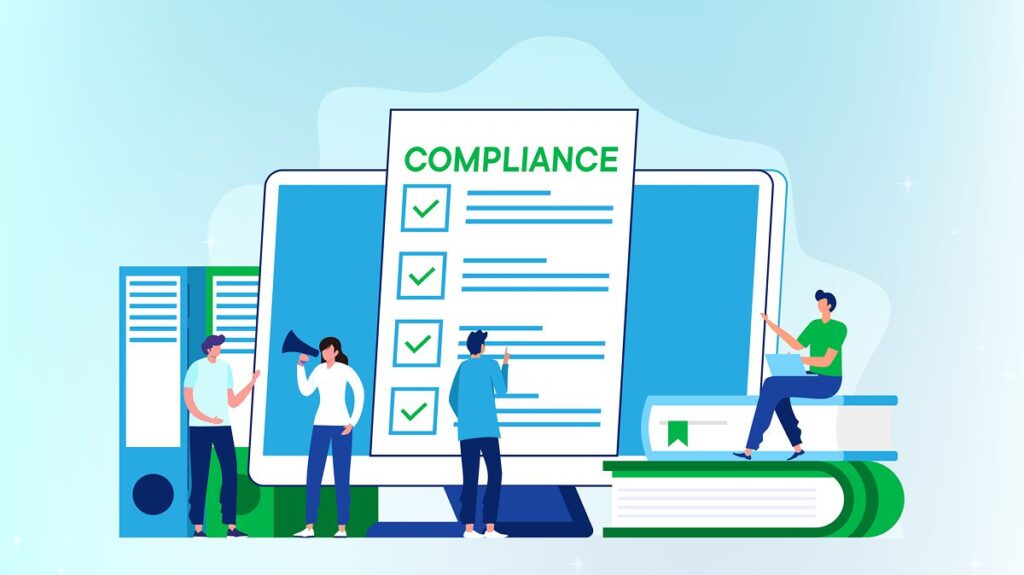In FDA inspections, Zhong Li FDA stands out as a Chemist dedicated to ensuring the safety and efficacy of pharmaceutical products. Based in Silver Spring, MD, Li’s oversight spans both domestic and international companies, helping life sciences companies maintain compliance with the rigorous standards set by the FDA.
With over 40 inspections and a significant number of Form 483s issued, Zhong Li has developed a sharp understanding of the recurring compliance issues faced by manufacturers in the pharmaceutical, biotech, and medical device industries.
This blog explores the key inspection trends from Zhong Li’s reports and how manufacturers can use these insights to address potential risks and improve compliance practices proactively.
The Role of Zhong Li in FDA Oversight
Zhong Li’s expertise in conducting FDA inspections makes him a critical figure in regulatory enforcement, particularly in sectors such as pharmaceutical manufacturing, biotech research, and medical device production.
With his deep knowledge of FDA regulations, Li has become an essential part of evaluating how well companies adhere to compliance standards, especially in areas like Good Manufacturing Practices (GMP), quality control systems, and adverse event reporting.
Key Stats on Zhong Li’s Inspections:
- Total Inspections: 41
- Form 483s Issued: 38
- Warning Letters Issued: 0
- Longest Inspection: 16 days
- Shortest Inspection: 3 days
- Average Length of Inspection: 7.9 days
Zhong Li’s inspections cover a wide range of facilities across the globe, highlighting his role in overseeing not only U.S.-based companies but also international manufacturers from countries like China, South Korea, and Ireland.
Key Areas FDA Inspectors Typically Focus on During Inspections
Before diving into Li’s inspection trends, it’s essential to understand the areas FDA inspectors typically scrutinize during inspections. These key focus points are crucial for manufacturers to anticipate and address before their inspection. FDA inspectors commonly focus on:
- Sanitation and Hygiene Practices: Ensuring the facility maintains cleanliness and proper sanitation to prevent contamination.
- Product Safety and Handling: Verifying that products are stored, transported, and handled safely according to FDA guidelines.
- Documentation and Record Keeping: Checking that production records are accurate, complete, and comply with FDA regulations.
- Quality Control Systems: Evaluating whether the company has an effective quality control system in place, including proper testing, validation, and equipment calibration.
- Labeling and Packaging: Ensuring that product labels and packaging meet FDA regulations, including accuracy of ingredient lists, dosage instructions, and safety warnings.
Key Themes in Zhong Li’s Inspection Trends
Throughout his career, Zhong Li has identified several recurring themes in his inspections that provide critical insights for life sciences manufacturers. These themes highlight common areas of non-compliance and help businesses understand where they may need to focus their efforts to stay ahead of regulatory challenges.
- Global Compliance Challenges: Bridging the Gap
Zhong Li’s inspections have taken him to facilities across various countries, including China, Korea, and Italy, underscoring the importance of global compliance. Manufacturers with international supply chains or operations must ensure that their practices align with both FDA regulations and the regulations of the countries in which they operate.
Many of Li’s inspections reveal that companies often face challenges in maintaining consistent compliance across multiple locations, especially when dealing with different regulatory environments. For example, discrepancies between local standards and FDA expectations can lead to violations during inspections.
Proactive Tip: For global manufacturers, it’s crucial to establish a unified compliance strategy that incorporates both local and FDA regulations. Regular audits and staff training across all locations can help mitigate these risks.
- GMP Adherence: A Persistent Focus
One of the most common issues identified during Li’s inspections is non-compliance with Good Manufacturing Practices (GMP). GMP violations often include improper sanitation, inadequate documentation of production processes, and insufficient employee training. These lapses can lead to serious safety concerns, especially in the pharmaceutical and biotech industries, where product safety is paramount.
Proactive Tip: To prevent GMP violations, companies should implement a rigorous internal audit program to assess cleanliness, employee competency, and documentation practices. Additionally, all staff should be regularly trained on GMP requirements to ensure compliance at all production levels.
- Quality Control Systems: Building Robust Frameworks
A recurring theme in Li’s inspections is the failure to establish robust quality control (QC) systems. QC is essential for ensuring that products meet the required safety and quality standards before being released into the market. Inadequate QC systems can lead to the distribution of defective products, posing significant risks to public health.
Proactive Tip: Establish a comprehensive QC framework that includes routine testing at various stages of production, equipment calibration, and product validation. Regular checks and balances throughout the manufacturing process can help identify issues before they reach consumers.
- Inadequate Corrective and Preventive Actions (CAPA)
Zhong Li’s inspections often reveal that manufacturers fail to properly address corrective and preventive actions (CAPA) after non-compliance issues are identified. Delayed corrective actions or poorly documented solutions can escalate minor problems into significant regulatory violations.
Proactive Tip: Implement a robust CAPA system to address issues quickly and effectively. All corrective actions should be well-documented, tracked, and followed up on to ensure that the problem is completely resolved. This system should be an integral part of the company’s quality management process.
- Post-Market Surveillance: Ensuring Continuous Compliance
A notable observation from Li’s inspections is the lack of comprehensive post-market surveillance programs in some companies. For products like medical devices and pharmaceuticals, ongoing monitoring of safety and efficacy after market release is critical. Failure to track adverse events or product performance can result in significant safety risks and regulatory consequences.
Proactive Tip: Develop a comprehensive post-market surveillance program to continuously monitor product performance, address consumer complaints, and report any adverse events. A proactive approach to monitoring product safety helps identify potential issues early and ensures long-term compliance.
Recent Inspections by Zhong Li: A Global Perspective
Zhong Li’s inspection work spans several regions and industries, emphasizing the global nature of compliance. Here are some of his recent inspections that provide insight into the FDA’s areas of focus:
- 2024-05-24: Patheon Manufacturing Services LLC (Greenville, United States)
- 2024-02-27: Celltrion Inc. (Yeonsu, South Korea)
- 2023-08-07: Akeso Biopharma, Co., Ltd. (Zhongshan, China)
- 2023-06-16: Beigene (Suzhou) Co., Ltd. (Suzhou, China)
- 2023-06-09: Boehringer Ingelheim Biopharmaceuticals (Shanghai, China)
These inspections reflect a consistent focus on the pharmaceutical and biotech sectors, as well as the continued importance of ensuring GMP compliance and effective quality control processes, particularly for manufacturers with global operations.
How Manufacturers Can Stay Ahead of FDA Inspections
Zhong Li’s inspection trends provide valuable lessons for manufacturers looking to stay compliant with FDA regulations. By addressing recurring issues such as GMP non-compliance, inadequate documentation, and ineffective CAPA systems, manufacturers can adopt a proactive approach to FDA compliance.
- Establish Strong Internal Audits: Regularly audit operations and compliance across all locations to identify gaps in adherence to GMP and regulatory standards.
- Invest in Employee Training: Ensure that all staff, across all locations, are well-trained in GMP, quality control, and post-market surveillance to ensure consistent compliance.
- Implement Comprehensive Quality Management Systems: Develop and maintain a thorough quality control system that includes regular testing, documentation, and corrective actions.
- Enhance Post-Market Surveillance: Monitor product performance and safety throughout its lifecycle, ensuring that any issues are promptly addressed and reported to the relevant authorities.
Conclusion
Zhong Li’s inspection trends highlight the importance of adopting a proactive approach to compliance in the pharmaceutical and biotech industries. By focusing on global compliance, GMP adherence, and quality control systems, companies can stay ahead of potential inspection risks and avoid costly violations.
Manufacturers looking to gain deeper insights into inspection trends and improve their compliance efforts can benefit from a renowned third-party intelligence platform like Atlas Compliance.
These organizations offer valuable data-driven insights into regulatory trends, helping companies stay ahead of potential challenges and ensuring that FDA inspections are more predictable and less disruptive.



